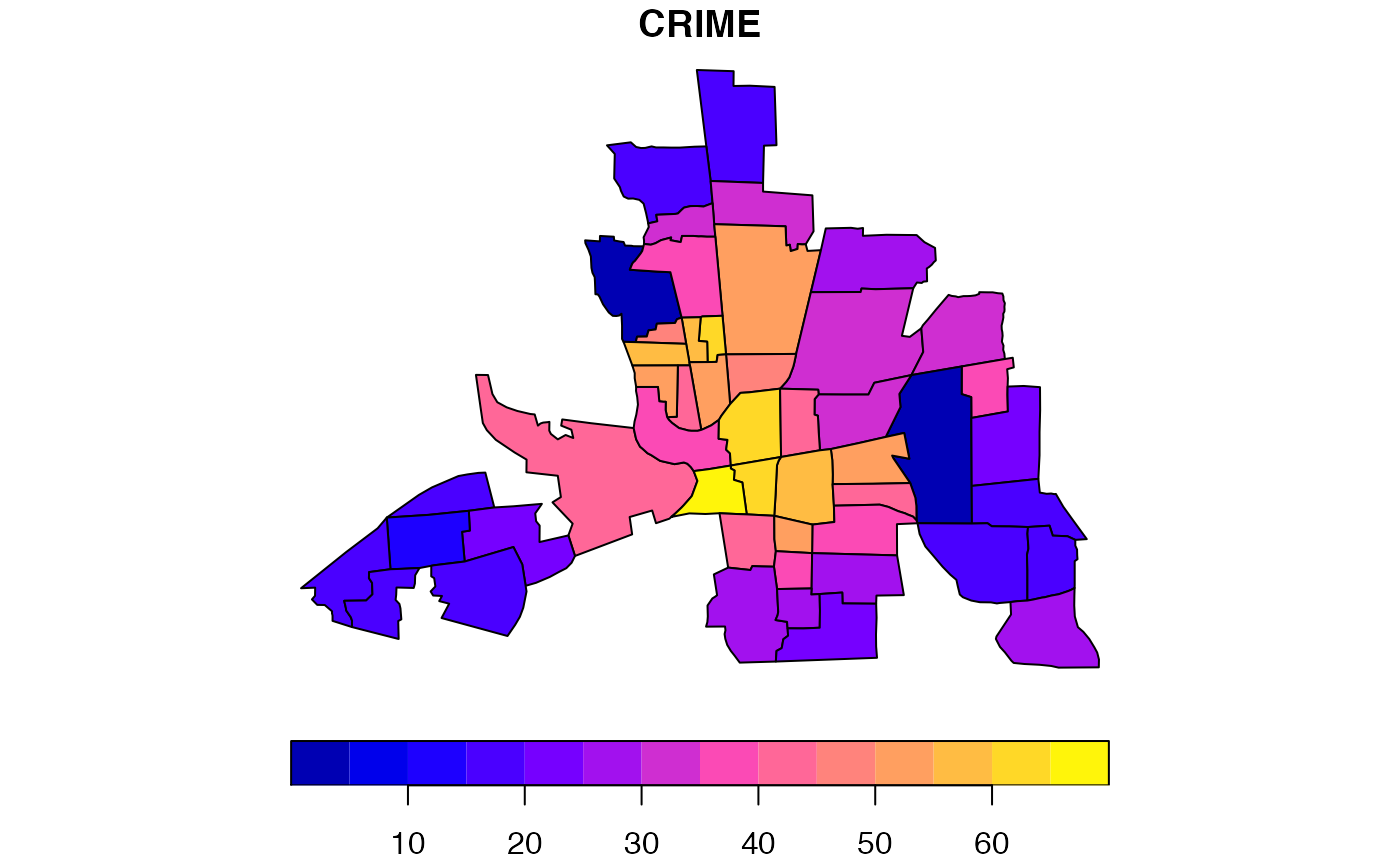Crime, housing and income data for 49 neighborhoods in Columbus, OH, 1980. Textbook example.
columbus
Format
An sf data frame with 49 rows, 20 variables, and a geometry column:
- AREA
neighborhood area (computed by ArcView)
- PERIMETER
neighborhood perimeter (computed by ArcView)
- COLUMBUS
internal polygon ID (generated by ArcView)
- COLUMBUS_I
internal polygon ID (geneated by ArcView)
- POLYID
neighborhood ID, used in GeoDa User’s Guide and tutorials
- NEIG
neighborhood ID, used in Spatial Econometrics examples
- HOVAL
housing value (in $1,000)
- INC
household income (in $1,000)
- CRIME
residential burglaries and vehicle thefts per 1000 households
- OPEN
open space (area)
- PLUMB
percent housing units without plumbing
- DISCBD
distance to CBD
- X
centroid x coordinate (in arbitrary digitizing units)
- Y
centroid y coordinate (in arbitrary digitizing units)
- NSA
north-south indicator variable (North = 1)
- NSB
other north-south indicator variable (North = 1)
- EW
east-west indicator variable (East = 1)
- CP
core-periphery indicator variable (Core = 1)
- THOUS
constant (= 1000)
- NEIGNO
another neighborhood ID variable (NEIG + 1000)
Source
Anselin, Luc (1988). Spatial Econometrics. Boston, Kluwer Academic, Table 12.1, p. 189.
Details
Sf object, unprojected. EPSG 4326: WGS84.
